Ram Trucks Towing Guide
Empowering truck buyers to make satisfying purchases
Context
- When
- 2012
- My Role
- Designer + Researcher
Having recently redesigned core elements of the Ram Trucks site, our team at SapientNitro looked for new opportunities to help. Analytics showed that the existing towing page was not performing well — 1M+ customers landed on that page each month, but most visitors bounced. Ram was the authority and #1 seller of trucks, but that wasn't translating online.
We had an opportunity to improve the towing page and drive customers to lower funnel activity (like building & pricing a truck, scheduling a test drive, or requesting a quote). The initial version of our Towing Guide drove 98% more traffic and improved conversion to lower funnel activity.
Understanding truck buyers
Customers looking for towing information on Ram’s website were greeted with a list of every possible truck configuration and some confusing jargon.
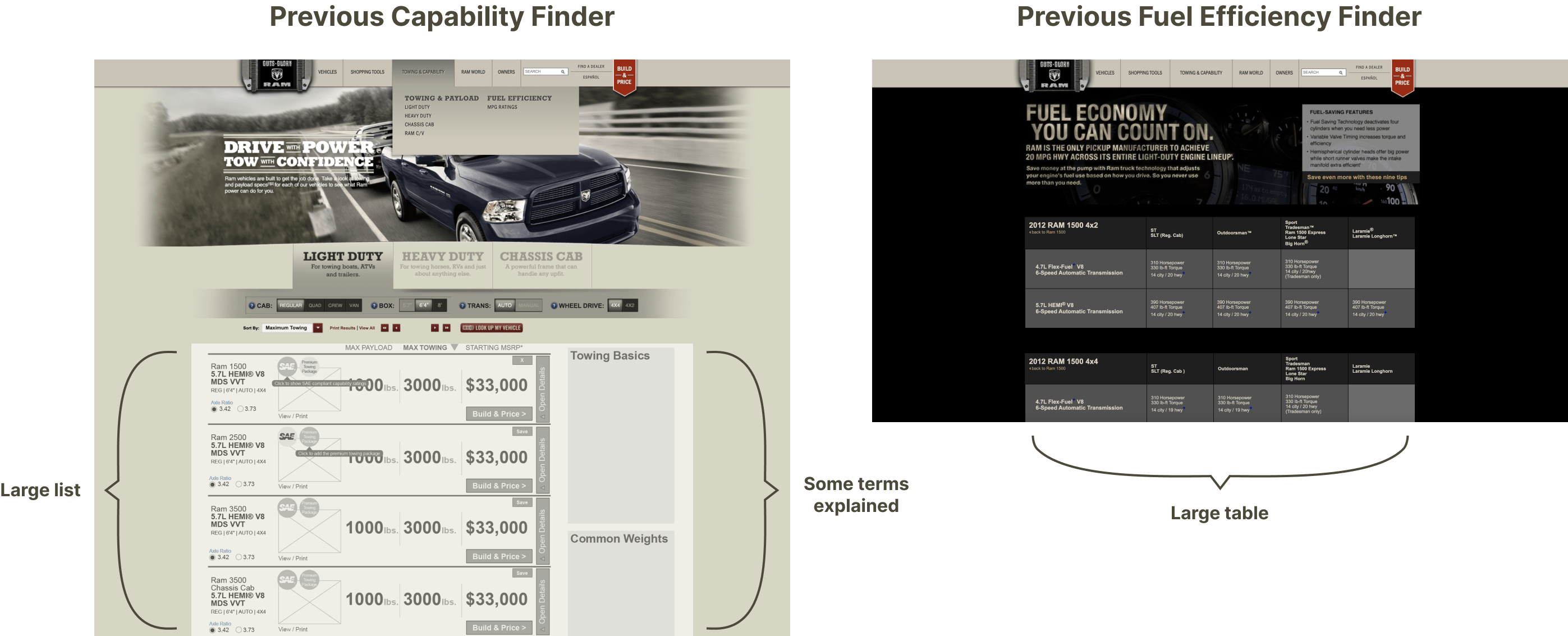
I set out to understand what customers were looking for by tracking discussions about towing in online forums, talking to people who I knew owned trucks, and seeing what dealers experienced when trying to sell on towing capability.
After deciding on the right question to ask, we ran a survey and found three actionable insights:
44% of truck owners buy to tow—and it’s the leading reason to get a truck. Slightly less buy for work capabilities (39%) and even less buy for the image (17%).
→ This means we could deliver application-specific content (equestrian, watersport, etc.) to make the site more relevant to potential buyers.People didn’t understand towing in great detail—consumers don’t fully understand which features affect towing capability and how they relate to other features (e.g. fuel efficiency).
→ There was an opportunity to show the capability and benefits to make a more satisfying purchase.There are no great towing resources on the web—most people still learn about towing from talking to other people who’ve done it before.
→ Ram could own towing on the web, elevating its brand and improving safety and awareness.
Defining our target customers

Segmenting our market, we decided how to target pieces of content for each type of buyer:
- First-time buyers would find value in “Before You Buy” content
- Repeat buyers would value “How-Tos” and “Towing Safety” content
- Expert towers would be satisfied with the raw data from the original capability finder
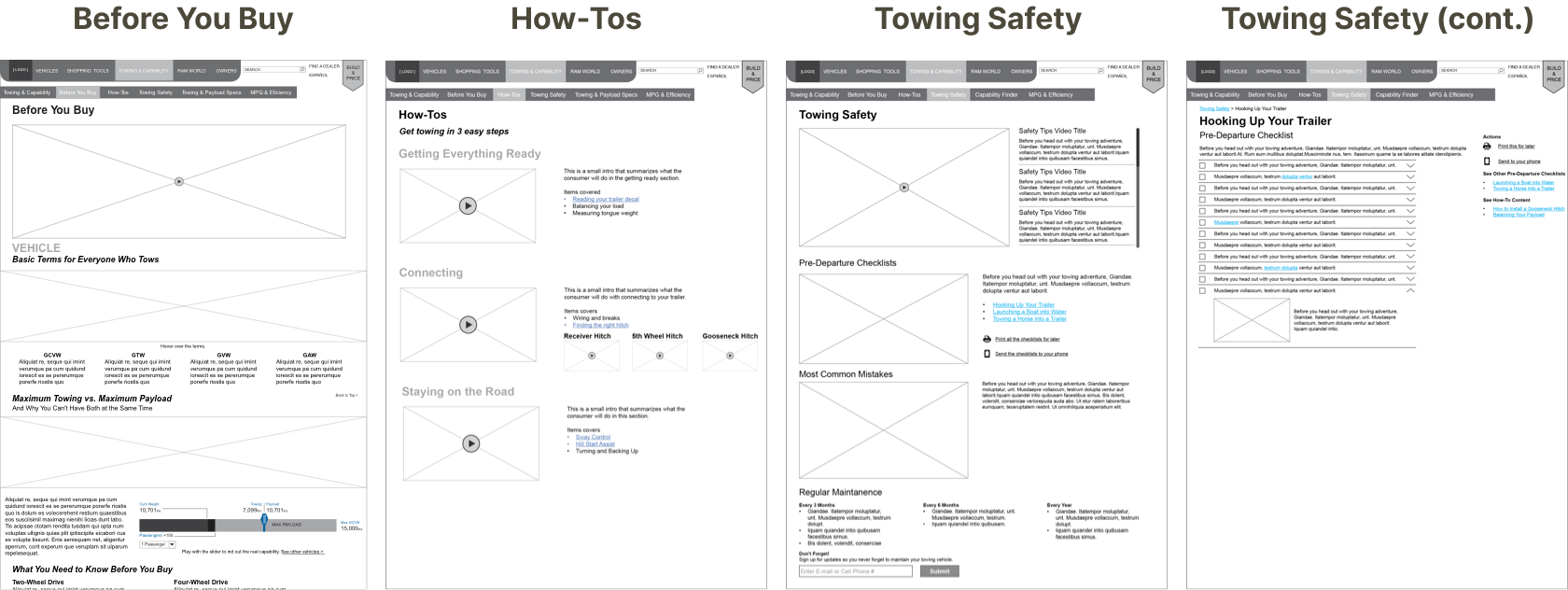
Testing content
I started developing rough content with the help of a copywriter and visual designer. Our goal was to test the new towing content and see what would be useful for each customer segment.
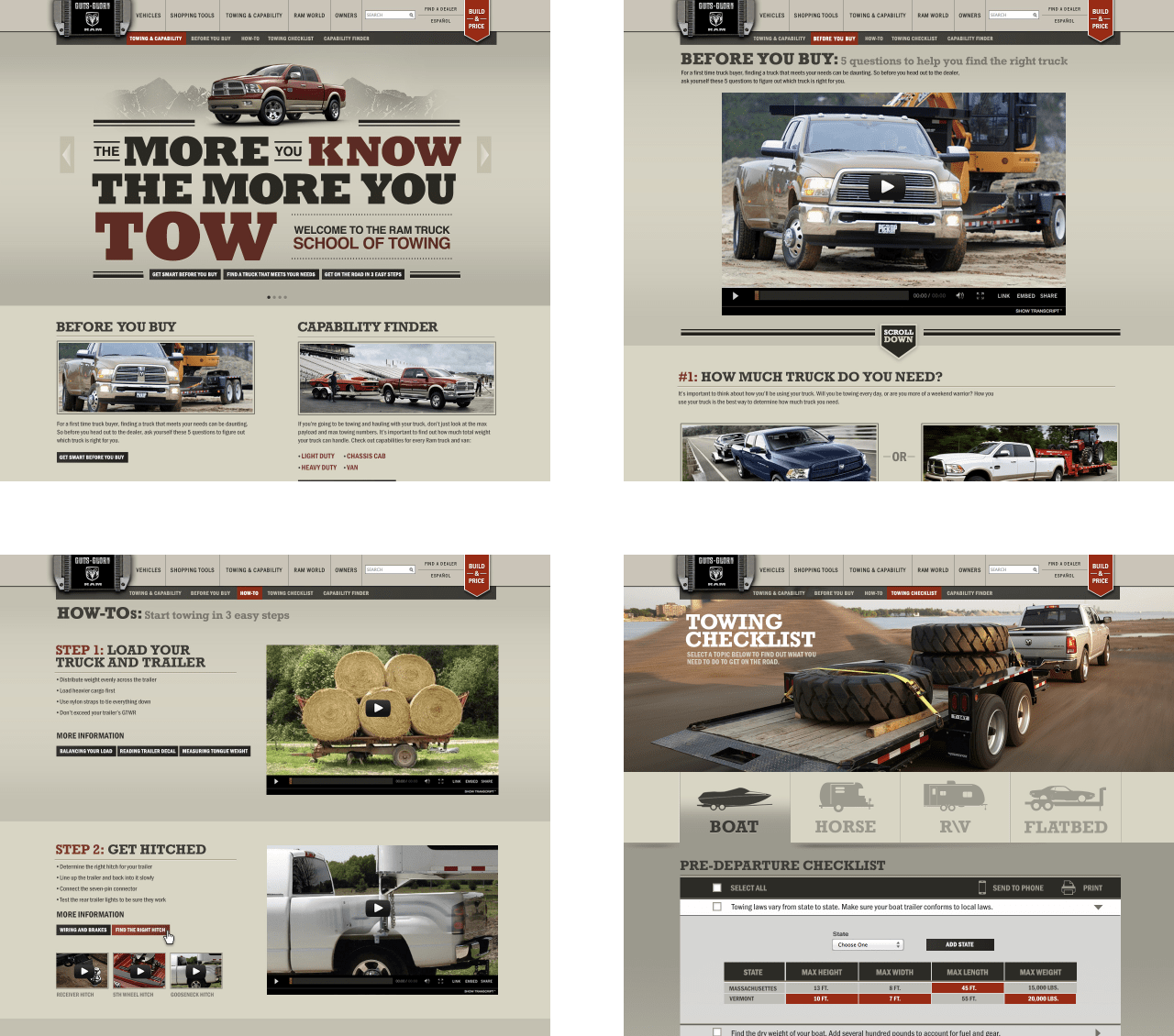
I set up a screener to recruit participants and testing scripts to run moderated, in-person interviews. We also streamed the sessions so other team members could tune in during the day.
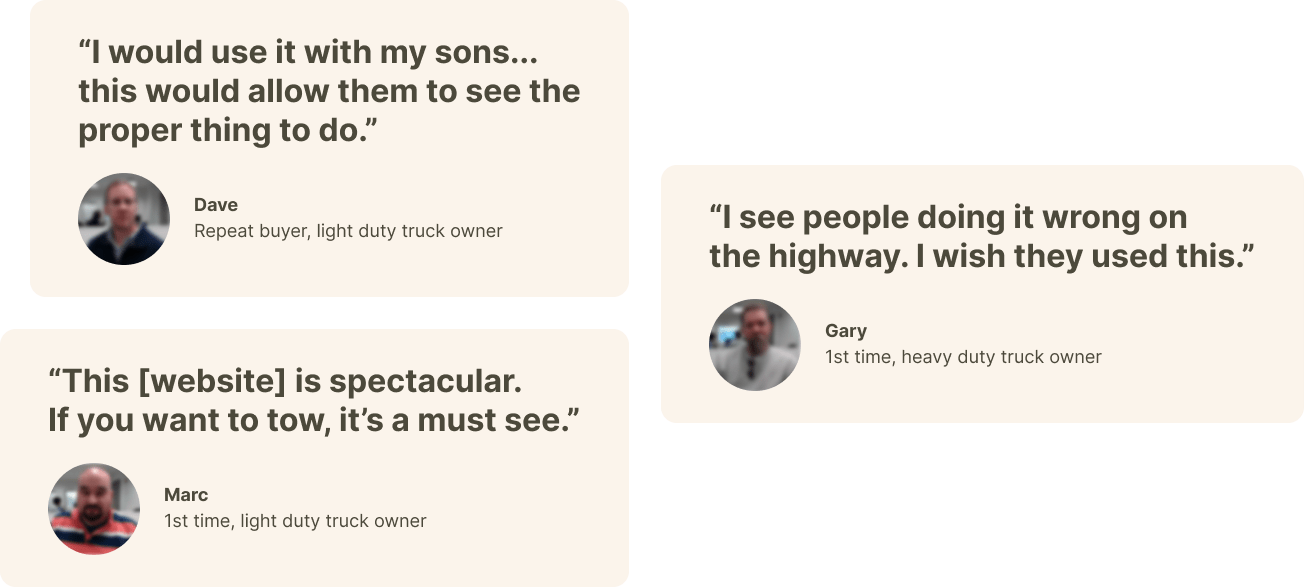
We had an overwhelming positive response from first-time and repeat buyers who were looking to tow. They wanted to have more intelligent conversations at the dealership and safely use towing equipment on their trips.
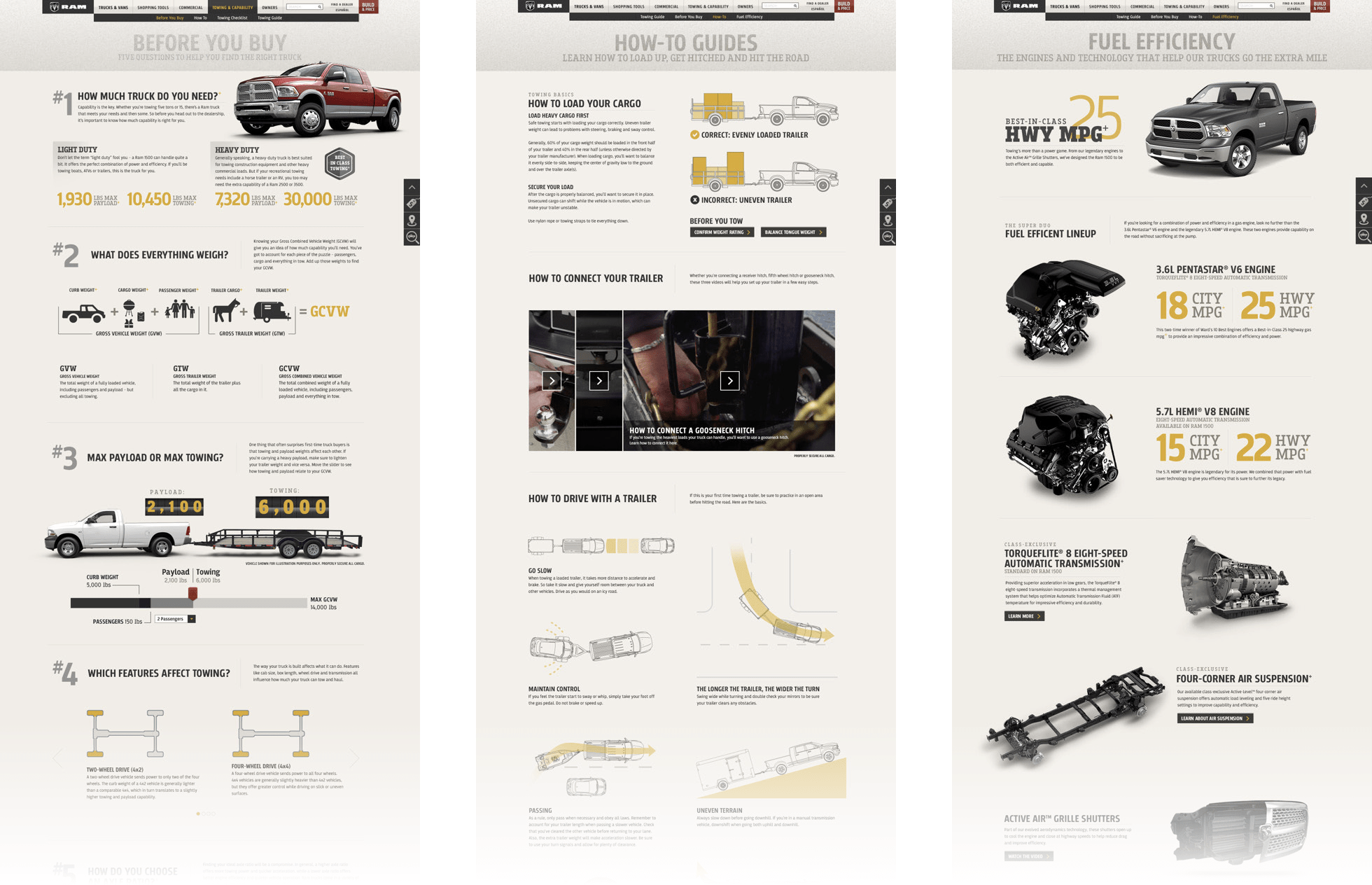
Much of our initial concept and strategy still live on the Ram Trucks site today. At launch, these changes contributed to 98% more traffic on the Towing Guide than the original page. Additionally, we improved our conversion rate to lower funnel activities. That meant customers dug deeper, showing that they had a stronger intent to purchase a truck after visiting the new towing pages.
My learnings
We drove a huge win by analyzing a weakness on the Ram Trucks site and developing a strategy to cement Ram’s authority around towing. The project also helped me level up my skill set:
- Rather than using our gut, we addressed the needs of specific segments of the truck buyer market.
- I used a variety of research methods and ran my first moderated, in-person research session.
- We were able to show the impact of doing upfront research to our client instead of jumping to solution mode.